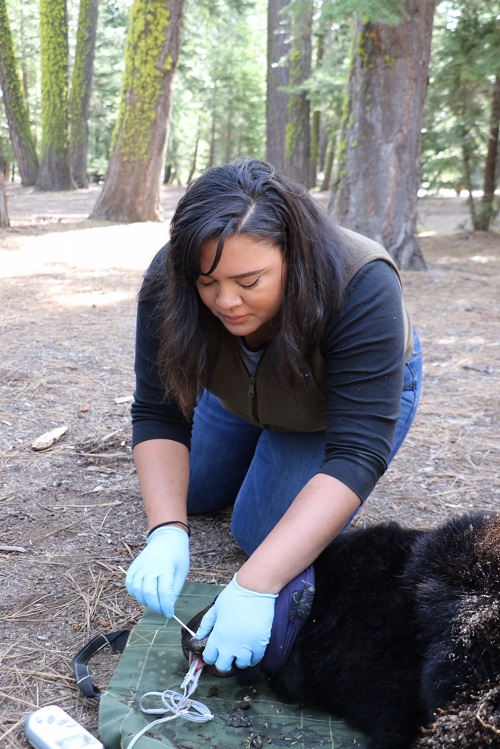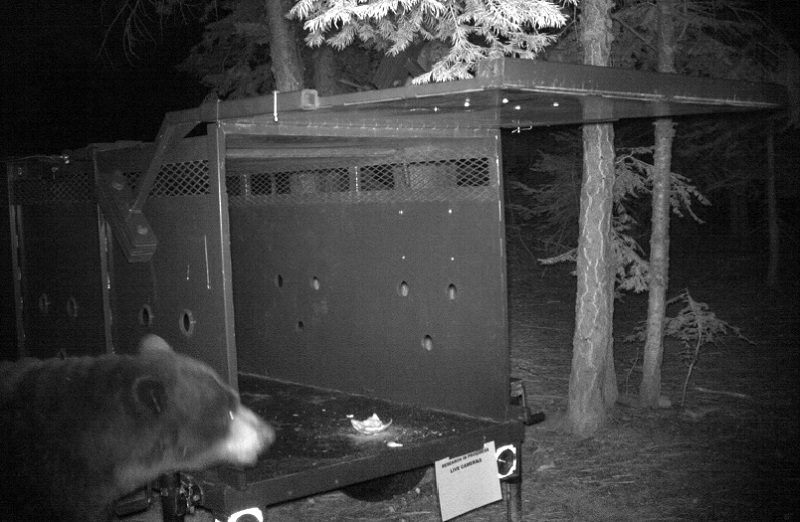The California Department of Fish and Wildlife (CDFW) and California State Parks are teaming up on a black bear research project in the Lake Tahoe Basin starting this fall. The goal is to gather genetic information on individual bears so that wildlife managers can identify individuals, better understand relatedness among bears, further understand their behavior and movements, and acquire a greater sense of the relative density of this species throughout the Tahoe Basin. Three black bears already have been captured, tagged and released this week as part of this scientific initiative.

Sarinah Simons from California State Parks collects a saliva sample from a Tahoe Basin black bear last spring. CDFW and State Parks are collaborating this fall to build a DNA database and inventory of Lake Tahoe's black bear population. CDFW photo.
The biologists will capture, immobilize and ear-tag individual bears while collecting biological samples (DNA through blood, hair, and saliva swabs). Trapped bears will receive a full field evaluation and the animal’s vital signs—heart rate, temperature, and respiration—will be monitored throughout the entire process. An inventory and DNA database of the Tahoe Basin's bear population will be accumulated over time.
Aversive hazing (“tough love”) may be applied to bears upon release. Techniques will include bean bag and paint ball projectiles as well as air horns. These tactics are based on a simple principle: If bears are smart enough to learn from positive experiences, perhaps they are smart enough to learn from negative ones as well.
Through this collaborative partnership, CDFW and State Parks aim to reduce the number and frequency of human-bear conflicts and restore black bears in Lake Tahoe to their natural and wild behavior. However, this can only be done through positive cooperation from the public. This includes storing all food and garbage in secure, bear-proof facilities, discouraging bears from residing in developed areas and NEVER feeding bears or other wildlife. Together, we can all work to keep Tahoe bears safe and wild.

CDFW and State Parks will attempt to capture, tag and release as many black bears as possible in the Tahoe Basin this fall in order to build up a DNA database of the population, be able to identify individual bears responsible for conflicts and provide aversive hazing to minimize future human-bear conflicts. CDFW photo.